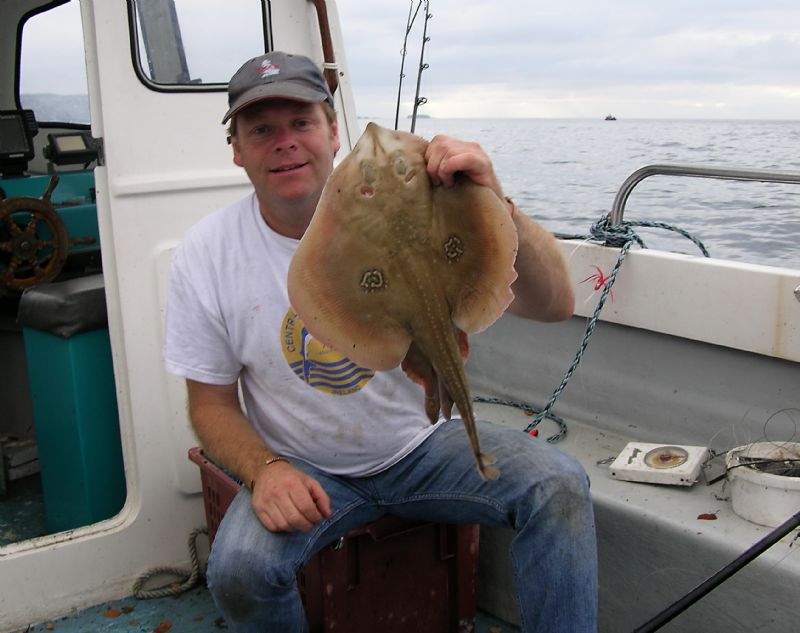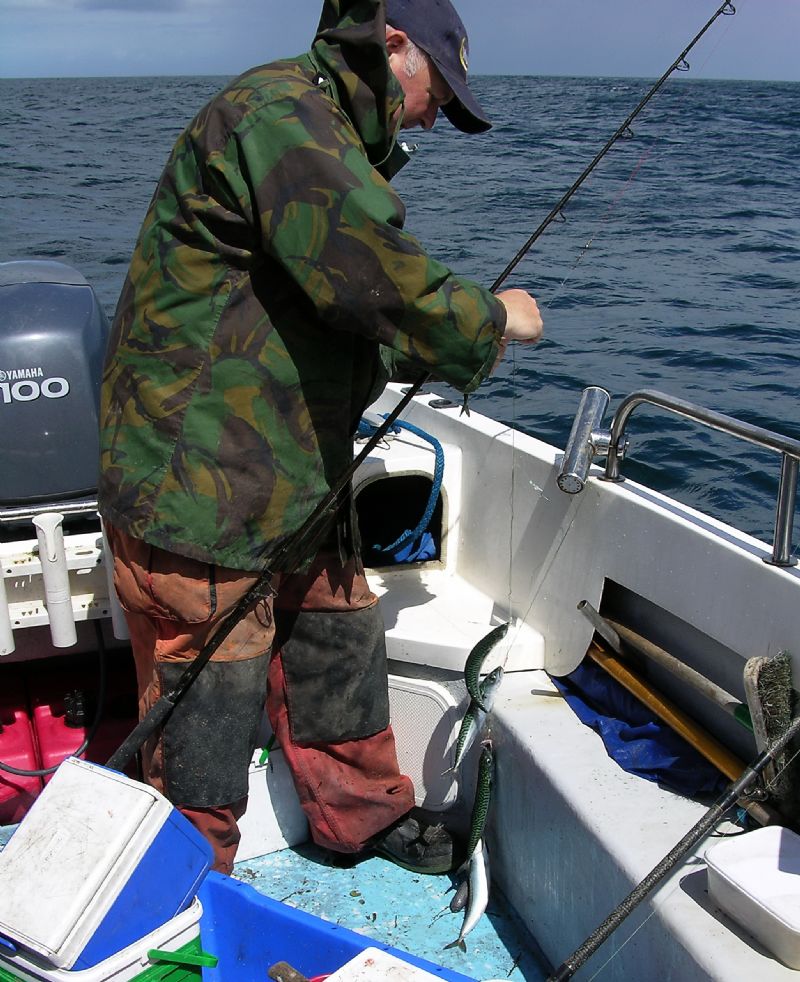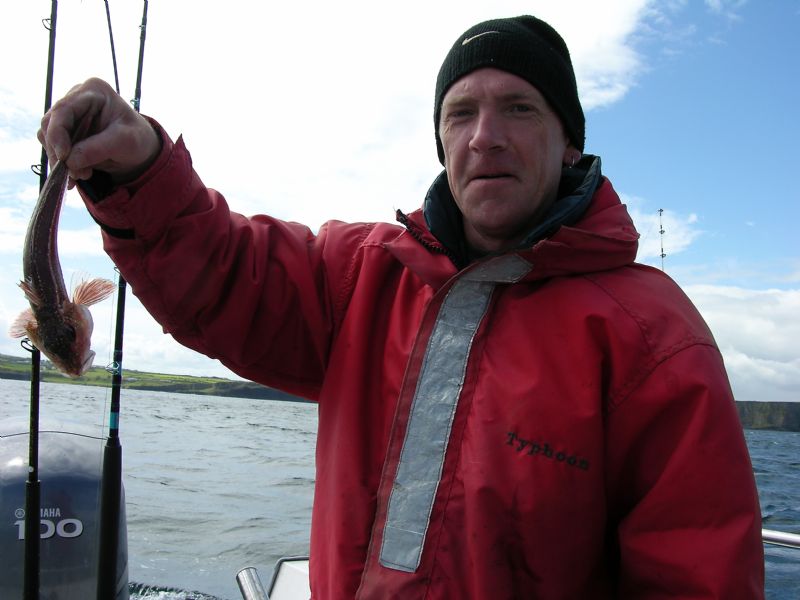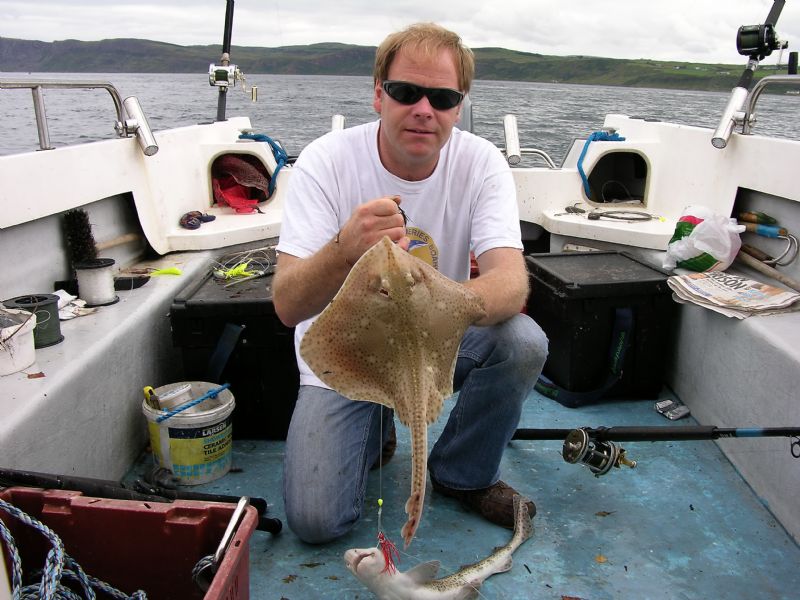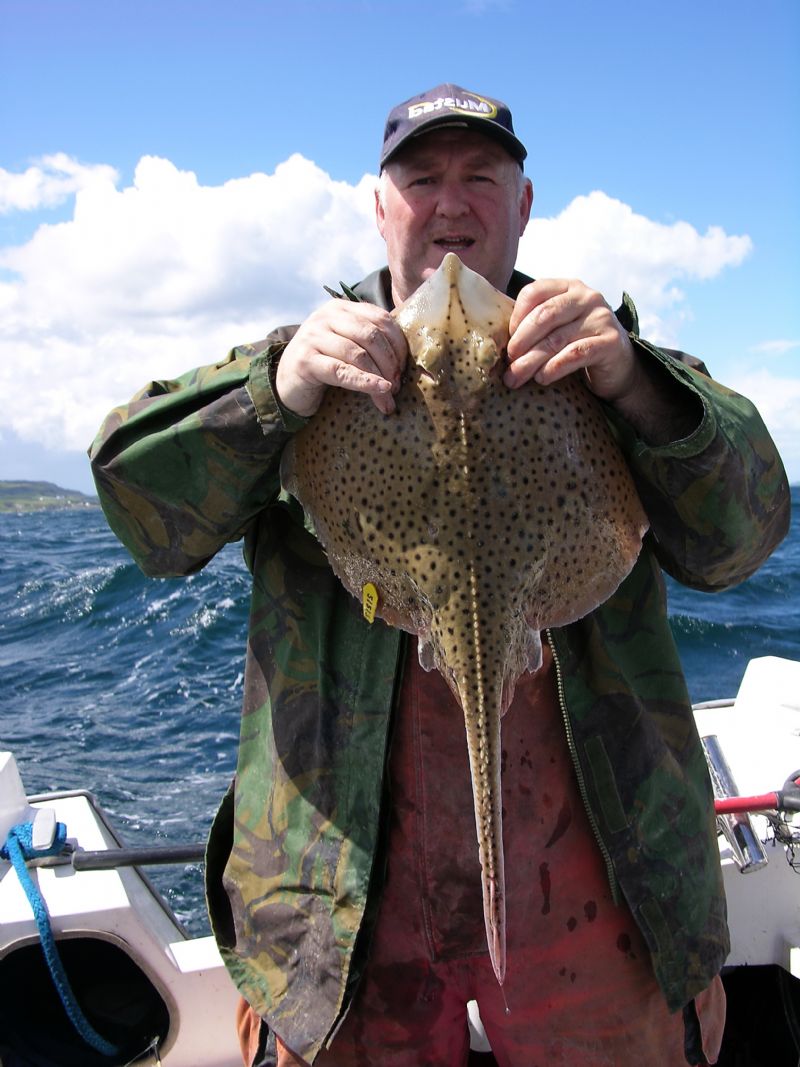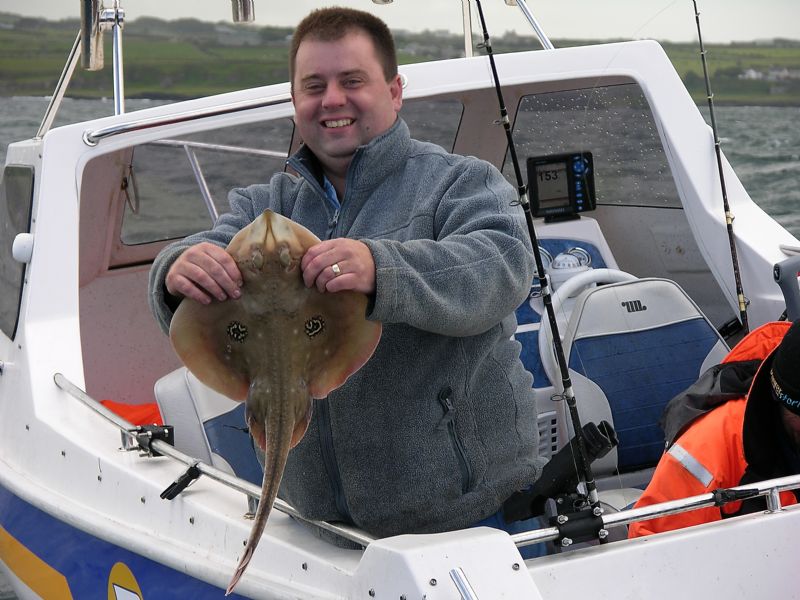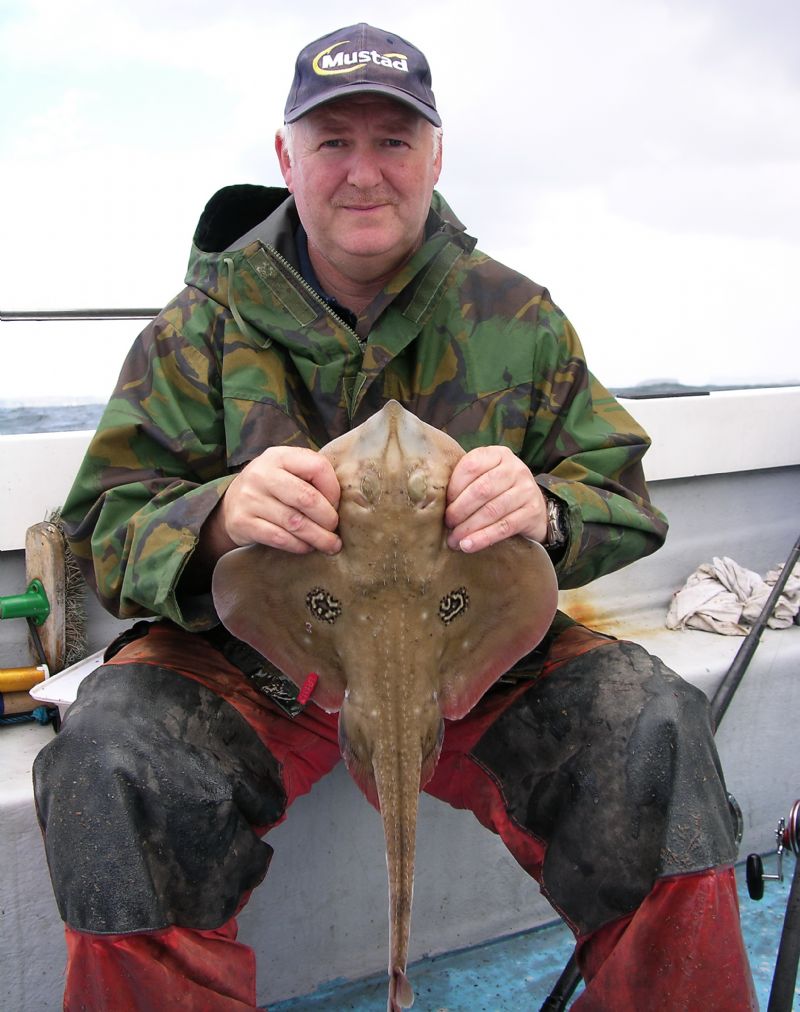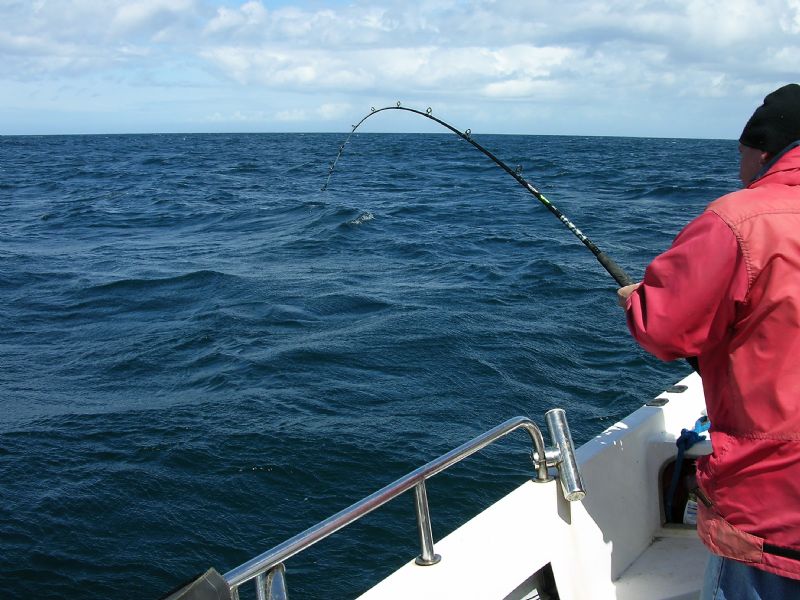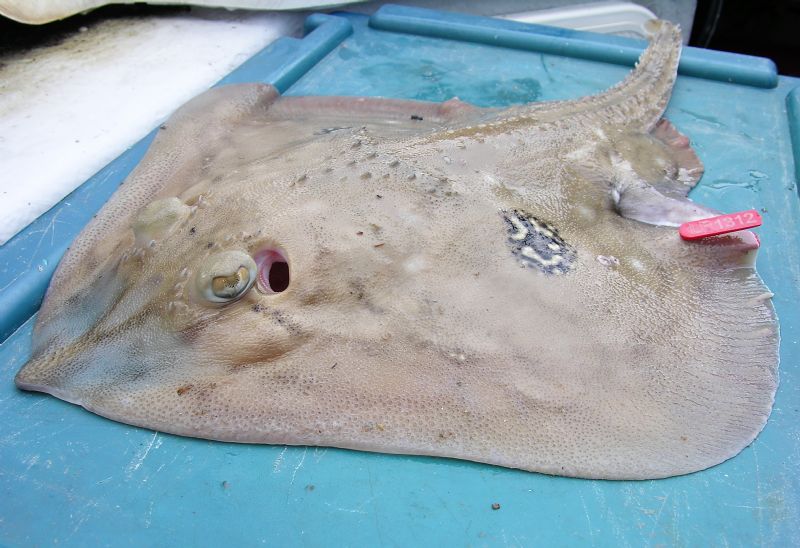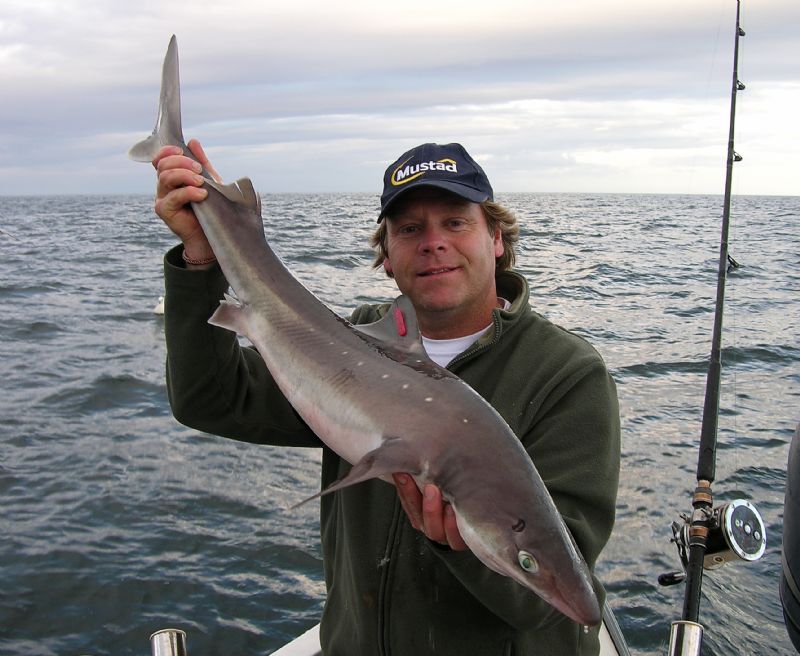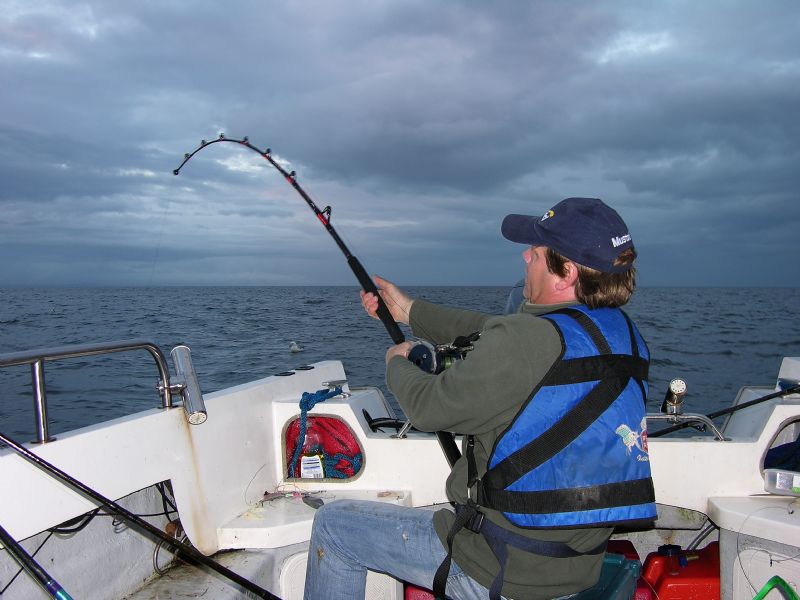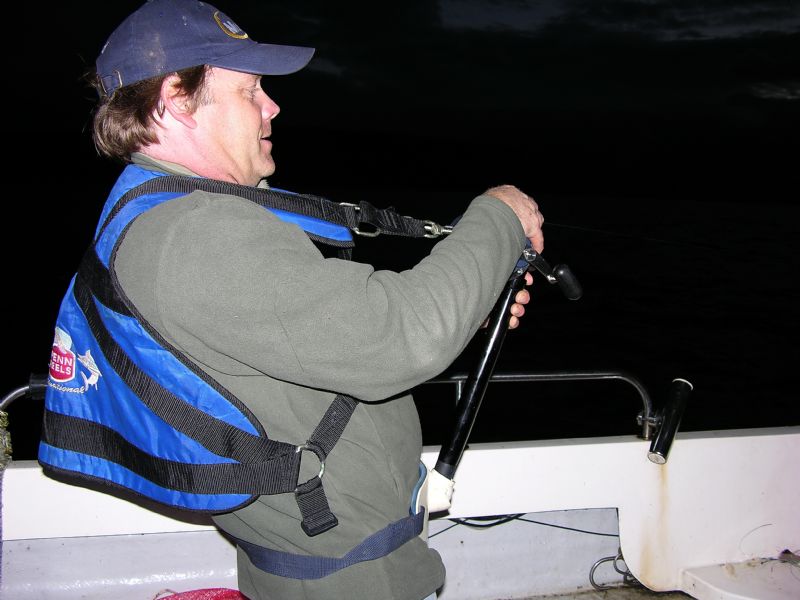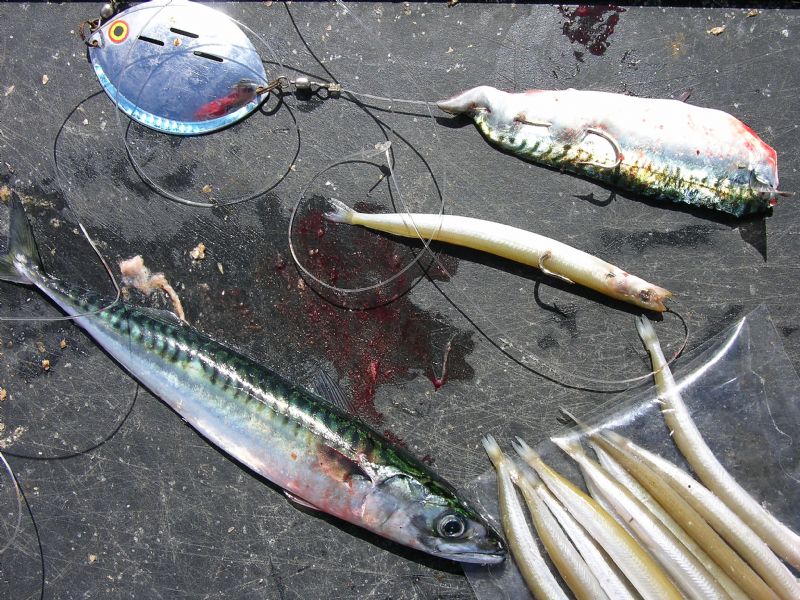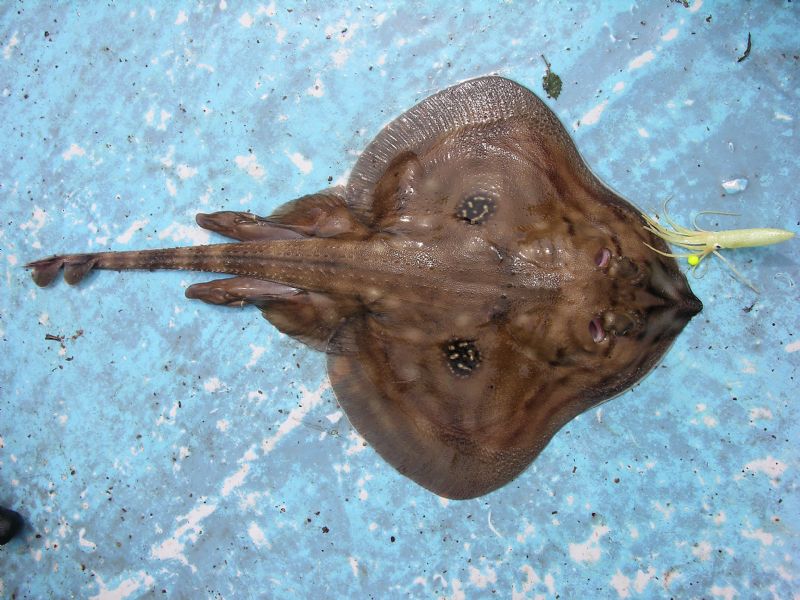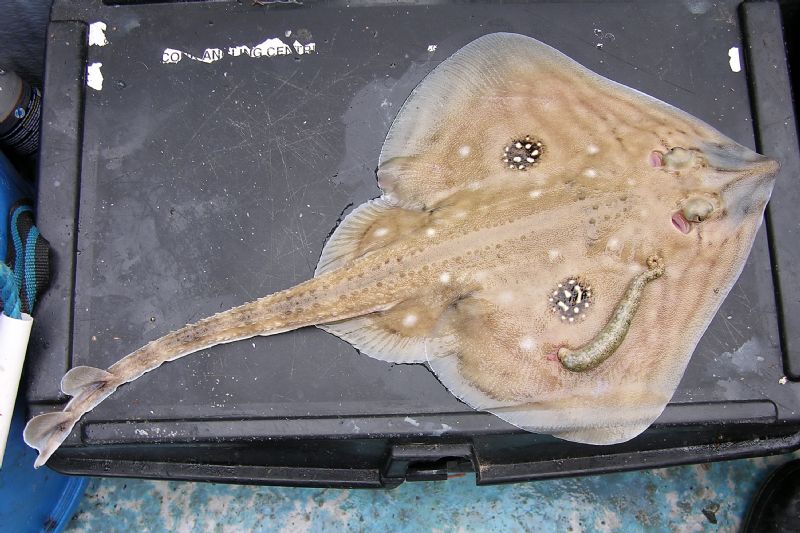Species hunt part 9 Cuckoo Ray
Cuckoo Ray
Fact file
Name Cuckoo Ray (info ID, click here)
Latin name Raja naevus
Irish record 5lbs 11ozs taken on 3.08.1975 on the Causeway Coast by V.Morrison
Specimen weight 4.5 lbs
The trip
It is amazing how fate has the ability to barge its way into an angling trip and alter a carefully organised plan. Often, this is for the worse, but sometimes, on that rare occasion, it can be of benefit. My recent adventure in search of this month’s target species, the Cuckoo Ray, has left me with mixed emotions and quite a bit out of pocket too!
I will leave it to you, the reader, to decide whether fate had dealt good cards or bad. Cuckoo Ray make a seasonal appearance on my local marks, arriving in early summer and normally gone by autumn. I have been patiently waiting all year to target these beautifully decorated rays, and when news filtered through on the angling grape-vine that a few fish had begun to show, it was time to head for the Antrim Coast in search of my favourite ray species.
The neccessary drop for fresh bait, the all-important mackerel
With Dave Craig and Michael Mcgimpsey for company, and George Hill sharing Andy’s superb Raider, we met at the harbour before launching. As the tide ebbed, the plan was to anchor on the leeward edge of an interesting sand bank, noted and marked on my plotter from previous trips. My plea to the lads was, “catch whatever you like, but make sure one of them is a Cuckoo Ray for a photograph”. The old adage of “safety in numbers” also works well when it comes to targeting specific species!
After the necessary hunt for fresh Mackerel (the number one ray bait), the anchor was thrown, and my Fast Fisher swung into position in the tidal flow. Simple running ledger rigs were set up, incorporating one or two hooks, and baited with full Mackerel flanks. When targeting rays, there is no comparison between faded looking frozen Mackerel, and the juicy, firm, scent-filled flesh of a fresh fish.
Michael displays one of many Grey Gurnard that were tearing our ray baits to pieces
A double-shot, but still no Cuckoo Ray
Andy was soon off the mark, with a fabulous Blonde Ray, and well into double figures. Cracking fish, but I covered that species several months ago! “Keep trying mate”. He then produced a specimen Spur dog of thirteen pounds. This new mark was proving to be a winner, throwing up some quality fish, although all we could find from my boat up to now was a constant stream of Grey Gurnards!
Dave’s predicted Cuckoo that turned out to be a Blonde! Sea state worsening
After what seemed an eternity of never-ending Gurnards, Dave lifted into a positive thump, declaring that it was a small ray, and I eagerly waited with landing net in one hand and camera in the other. He was right, it was a small ray, but unfortunately covered in spots! The pretty Blonde was carefully tagged and slipped back over the gunnels. Just as it seemed our target species was going to elude us on this occasion, George called over and held up the Cuckoo I had been looking for, saving the day, cheers mate! With enough photographs taken, the pressure had lifted. I needn’t have worried as it turned out, as the rays began to feed steadily by this stage.
George Hill led the way with the first Cuckoo Ray of the day.
Dave Craig with female Cuckoo Ray
Some readers may be asking by now, exactly what part did fate play in all this? Just as the fish came on the feed and we were settling in to a potentially fabulous ray session, the strong southerlies veered west, quickly building the sea to dangerous proportions. Andy and George wasted no time in lifting the anchor and heading for harbour, but I decided to give it a little longer as the forecast had given winds to ease. There were no gale force or small craft warnings over the VHF, and although conditions were un-comfortable, we were still within the boat’s safety limits. Insisting on flotation vests being put on, we persevered but angling became impossible and it was time to get the heck out of there. I know it sounds foolish to have fished on, but sometimes the attraction of superb angling can take the edge off common sense! A lesson learnt.
A tagged Cuckoo Ray and Michael putting pressure on another ray
Needless to say, we made it back to the harbour, never so glad to clamber onto solid ground. George and Andy had packed up and headed home, but as it was only early afternoon, we decided to have a cuppa and formulate a new plan. Further down the coast, the headlands offer shelter from a westerly, and with my crew up for another adventure, we retrieved the boat onto the trailer and headed south. Fate. At our new destination, the sea appeared flat calm. It was a different world from the one we had left an hour earlier. This particular hot-spot fishes best over slack water, and our timing was perfect.
Also, with plenty of fresh Mackerel left in the cooler box, there was no need to stop for bait. I made a bee-line for the deep-water mark, as the lads prepared the tackle and lashed an onion sack of pre-made “chum” to the anchor chain. In such deep water, it is important to anchor in the right spot to avoid the hassle of lifting and re-anchoring but with the tide rapidly slackening, this was relatively easy. Baited hooks were soon hurtling towards the seabed, with the calm sea a welcome relief from the hellish conditions earlier. Lesser-spotted dogs soon made their presence known, along with a few bonus Black Mouthed dogfish. This little known species is becoming quite a common catch these days. With my rod tip bouncing, I soon had my first decent Spur dog of the season, a fine fish of fifteen pounds. This second trip of the day was fast becoming a success.
After the forced move, I produced this bonus specimen Spur dog of 15 lbs.
However, as quick as the fish had obliged, they simply switched off. This can be due to a number of reasons, the more interesting one being the arrival of larger predators. With this in mind, I rigged up the eighty-class gear and dropped a whole Mackerel-baited running ledger to the seabed. A quick glance at my lighter boat rod, and I was shocked to see it pointing seawards, line ripping against the clutch. The rod holder had been forced down under pressure, pure luck that the rod had not been pulled over board or broken! I gently lifted into what was obviously a Common Skate, and remember thinking “not again”. It was only a couple of months ago that I hooked and landed a Skate of 130 lbs on a light rod and Dogfish rig, and that was a struggle. The lads cleared the deck and I settled down for the battle, rod harness and butt pad in place.
An hour into the fight, and my beloved Team Daiwa 12-30lb class rod exploded, with the top half sliding down the line towards the Skate. A quick discussion and we released some anchor rope over the gunnels to create enough slack line to cut the braid and splice it onto Michael’s eighty-class rod. Back in business, trying to forget the fact that my favourite (and expensive) rod of twelve years had just been obliterated! This was a huge fish, and the eighty-class Fenwick made little difference to the fight. Another forty minutes later and the Fenwick exploded, snapping at the butt, and leaving me holding the fish against the reel!
Starting to feel the strain, I’m on the second rod by this stage, and the Skate is in mid water, refusing to budge!
Dave stepped forward with his rod, a fifty class Daiwa. We were rapidly running out of tackle. Another quick splice job ensued, only this time, as I reeled loose coils onto the reel, the main line wrapped itself around the fillet knife that David had dropped on the deck. As it did not seem to damage the braid we took a chance and made sure the splice was well onto the reel before taking up the strain yet again. By this time, and two hours into the fight, I was physically exhausted. Dave put his shoulder under the rod to take the strain, and Michael let anchor rope off to catch up with the fish and recover hard earned line.
Second rod destroyed (Michael’s!) I am left with the rod butt and reel. Fish still on and it’s now dark!
We guessed the Skate was now within thirty feet of the surface, but she dived powerfully, tearing line off the Penn 6/0 against a fully tightened clutch. The spliced knot appeared and the braid snapped like cotton, not at the knot, but at the section that had touched the knife earlier! All was lost. It was time to pack up and head for shore. I felt exhilarated, exhausted and deflated all at once. I lost the fish of a lifetime that in all likelihood was never destined to see. We overcame two disasters but she won in the end.
So you now see the reason for mixed emotions. We managed to catch the target species, plus some bonus specimens, but lost a fantastic battle, never mind the costly destruction of two rods and a full spool of braid. This is the attraction of sea angling. You can target particular species to a certain degree of accuracy, as hopefully I have shown in this series, but you can never be sure of what else is cruising the depths below, and just as willing to take a small bait as confidently as a large bait. As far as fate is concerned, if the wind had remained from the south, we would have had no need to move. We could have had a ray day like no other, or on the other hand, they may have just stopped feeding. When fate intervened, we had to come up with another plan. That’s the constant challenge which keeps me interested, keeps me fishing, and keeps me spiritually alive.
Bait
I have taken Cuckoo Ray on ragworm, lugworm and Sand eel, but fresh Mackerel fillets are superior by far. This bait should not be a problem as these rays gather around our inshore coastal waters around the same time as the shoals of Mackerel move in. Ragworm/Mackerel and Sand eel/Mackerel cocktails can be excellent.
Fresh mackerel fillet on the lower hook, and a Sand eel on the top hook.
Tackle
In theory, if tidal conditions allow, light boat tackle is all that is required. A 12-20 lb class rod is more than enough, teamed up with 30lb braid mainline, and a running ledger comprising of a 50 lb hook length and size 4/0 hook. However, it isn’t quite that simple. The habitat preferred by Cuckoos is often frequented by larger species such as Blonde Ray, Spur dog and even Common Skate! This is where personal choice and experience becomes a factor.
Reccommended rod........Penn Rampage Boat Rod-12-20lb - Black, 7.8 Ft
Reccommended reel........Penn Squall 20 Level Wind Star Drag
If you wish to fish light and enjoy the sport, there is the chance that a larger species will be lost. I prefer a balanced approach, and will fish a 12-30-class rod, 4/0 reel, 50lb braid as mainline, and 150lb hook length coupled with a strong 6/0 hook. It does not seem to deter the smaller rays and usually gives a fighting chance if that fish of a life time shows up. We have all heard countless stories of lost battles with larger fish; this article is a prime example! I have found that attractor spoons can make a diffence at times.
Reccommended attractor spoons......Abu Garcia Rauto Spoon
Tactics
Standard ray tactics are all that is required. Obviously target areas that have produced Cuckoo Ray in the past, but a great deal of satisfaction is gained from finding new marks off the beaten track. Once found, keep them to yourself! I have lost several fabulous marks to anglers that prefer to share with the masses, only to see them destroyed in no time at all. It’s a sad situation that inshore marks are still offered no protection from over fishing. Tralwers have done un-told damage, and now our threat is from scallop dredgers that not only disrupt marine life, also tear up the natural environment.
Female Ray with leach-like parasite and a male ray
Interesting facts
Cuckoo Ray lay egg cases from December through to May. The egg cases are 5-7cm long and 3-4 cm wide, with long curly “horns” to grip the seabed. They will frequent water depths of 30-500 metres but seem to prefer the 70-metre range. As with most rays, Cuckoos feed predominantly on crustaceans and marine worms but have a particular fondness for small fish, especially Sand eels.
Their range is from the Eastern Atlantic, the North Sea, inshore waters around Ireland and Great Britain to the Mediterranean, Morocco and Senegal. They are oviparous, laying approximately 70-150 egg cases per individual per year, but as with all skates and rays, are highly vulnerable to over fishing. They mature at 4 years old and rarely exceed 70cm in length. Identification is not a problem. Cuckoo Ray are the only ray species to have two large, mottled “eyes”, one on each wing.




